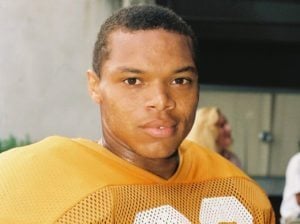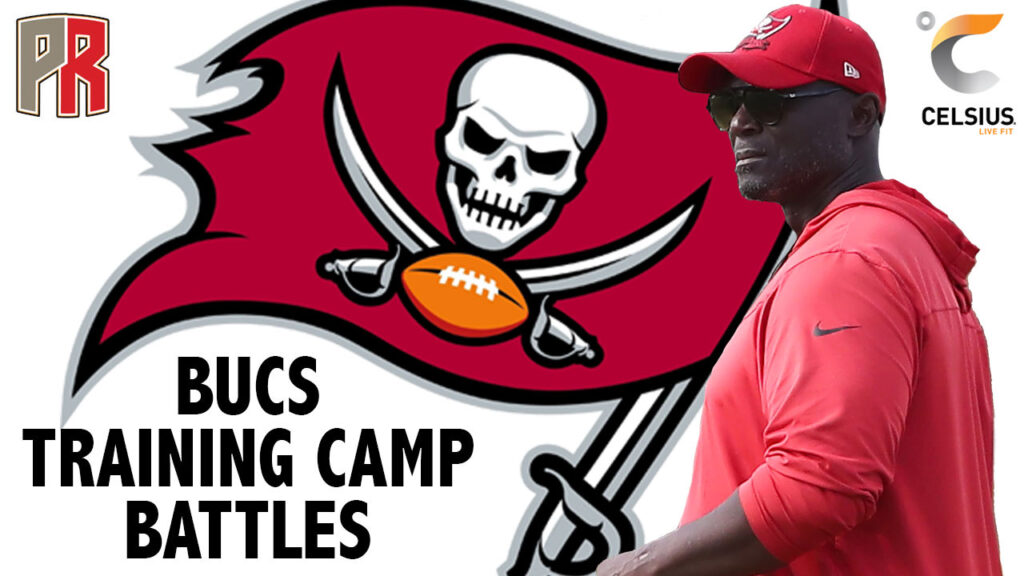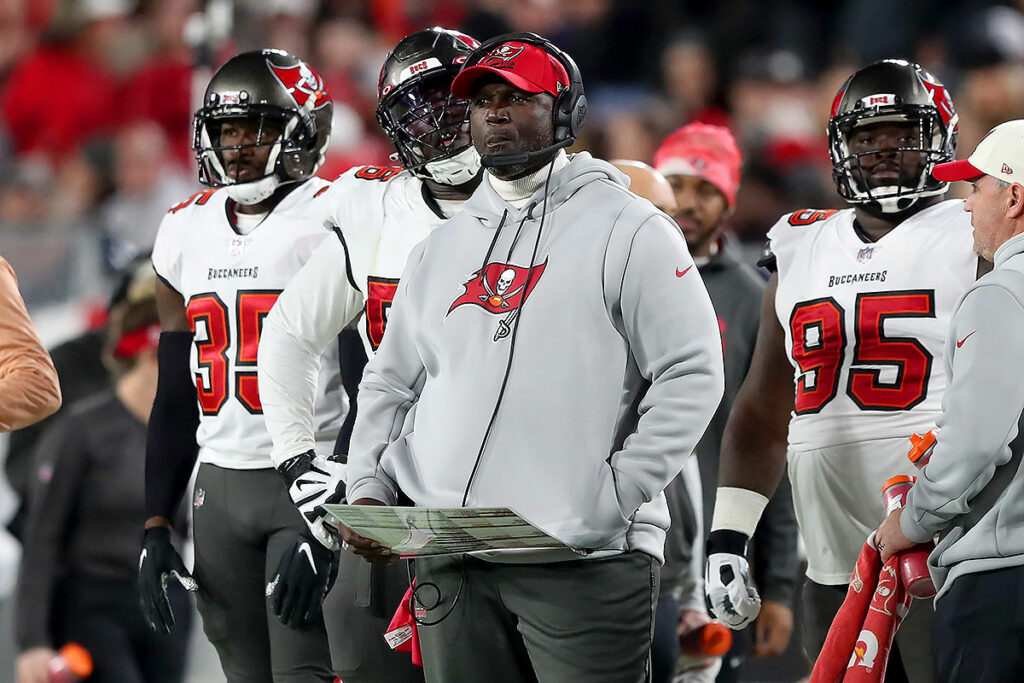When fans think of the Buccaneers, most, if not all, recall the Super Bowl-winning teams of 2002 and 2020. Anytime before that is generally seen as a dark era of Bucs football filled with a lot of losing seasons. Even with that caveat, plenty of players shined with impressive years and stints. Players that are largely forgotten in the minds of fans, apart from the most ardent and hardcore supporters.
For this series, I wanted to take a look at players who are underrated or not mentioned much when discussing the team’s history. The number of players mentioned in each entry will vary based on position.
The only rules are that they were Bucs between 1976 to 1996 – fitting the prerequisite of rocking the original “Bucco Bruce” uniforms – and are worth remembering.
Overview:
The two best wide receivers in Buccaneers’ history are currently on the team – Mike Evans and Chris Godwin. Before their arrivals in the last decade, the Bucs have had trouble drafting and developing impactful players at the position.
That is not to say that big-name receivers have not played in Tampa Bay. But before joining the Bucs, Keyshawn Johnson, Keenan McCardell, Joey Galloway, Vincent Jackson, and Antonio Brown had all established themselves elsewhere.
With that said, turning back the clock before the 21st century, a few wide receivers racked up yards in bunches as some of the first dynamic weapons in team history.
Forgotten Bucs At WR
Kevin House
A second-round pick by the Bucs in the 1980 NFL Draft, Kevin House was the team’s first 1,000-yard receiver when he eclipsed that mark with 1,176 yards in 1981. That year was his first as the No. 1 wide receiver on the team, and he reached that milestone on just 56 catches, equating to an impressive 21 yards a catch. His best game that season came against the Tom Flores-led Raiders when he tallied 178 yards and a touchdown on just four receptions.
That contest would be one of his 14 100-yard games in Tampa Bay. During the mid-1980s, he established himself as a big-play threat, with quarterback Doug Williams often connecting with him down the field.
While the 1981 season would be a career year for him, House was still productive as a Buccaneer. He would have another 1,000-yard season in 1984 and accumulate 4,928 receiving yards and 31 touchdowns before being traded to the Rams in 1986. Those marks still rank fourth and fifth, respectively, in the team record books.
While he would fall out of the league at the age of 30, he injected plenty of life into Tampa Bay’s offense in a short amount of time.
Gerald Carter
The Bucs went on to draft another prominent wide receiver in the same 1980 draft as House; it just did not happen immediately. In the ninth round, the team selected Gerald Carter, who initially failed to make the team and was released. After appearing in three games with the Jets, Tampa Bay brought him back, and he was used sparingly in 1981 and 1982.
The 1983 season would be a breakout year, as he recorded 48 receptions for 684 yards and two touchdowns. His best campaign would be the following season as the No. 2 receiver when he caught 60 passes for 816 yards and five touchdowns from quarterbacks Jack Thompson and Steve DeBerg.
The parallels with House continued as Carter failed to make it past the age of 30. Heading into 1988, Carter suffered a hamstring injury and would not play a game again. Although he really only played five full seasons, he still ranks tenth all-time in receiving yards.
While his career was cut short on the field, he made just as large of an impact off of it. In the second half of his life, he became known as “Coach” Carter, serving as an athletic director at the Boys and Girls Clubs of the Brazos Valley before retiring there in 2020.
Mark Carrier
After House and Carter left the team, another wide receiver took the reins in a new era of Bucs football. In the same 1987 draft class as quarterback Vinny Testaverde, Mark Carrier joined him as a third-round pick and big things were expected.

Former Bucs WR Mark Carrier – Photo by: Cliff Welch/PR
While Testaverde and the team would still largely disappoint, Carrier did not. One could see his talent on display as soon as his rookie year when toward the end of the season, he had eight receptions for 212 yards and a touchdown against the Saints.
After a 970-yard effort in 1988, he would produce one of the finest seasons a receiver has ever had in Tampa Bay in 1989.
Carrier justified his Pro Bowl selection that year with 1,422 yards on 86 receptions and nine touchdowns. He had nine 100-yard games that season alone, ending on a high note with four consecutive such games.
To put his out-of-nowhere effort into further context, 45.4% of Testaverde’s total passing yards that year were thanks to Carrier, who often made something out of nothing as a one-man wrecking crew.
His single-season total for receiving yards also ranks second all-time among Bucs to Mike Evans, who had 1,524 yards in 2018.
For a time, Mark Carrier helped “carry” Tampa Bay’s passing attack and had 5,018 yards and 27 touchdowns while donning the iconic Bucco Bruce uniforms.
After one more year as a Buccaneer, Carrier signed with the Browns, again joining Testaverde. They each got a taste of playoff football there in 1994, and in 1995 he would be drafted by the Panthers in the 16th round of that year’s expansion draft. He had another 1,000-yard year in his first season there and stayed with the team through 1998 before retiring.
Post-playing days, Carrier joined the division-rival Panthers in 2011 as the team’s director of player development and had additional front-office roles there before leaving in 2020. As of now, he works with the Bills as their player engagement director.
Adam Slivon has covered the Bucs for four seasons with PewterReport.com as a Bucs Beat Writer, Social Media Manager, and Podcaster. Adam started as an intern during his time at the University of Tampa, where he graduated with a degree in Sport Management in May 2023.
In addition to his regular written content, he appears every Thursday on the Pewter Report Podcast, has a weekly YouTube Top 10 Takeaways video series, and leads the managing of the site's social media platforms.
As a Wisconsin native, he spent his childhood growing up on a farm and enjoys Culver's, kringle, and a quality game of cornhole. You can find him most often on X @AdamLivsOn.




